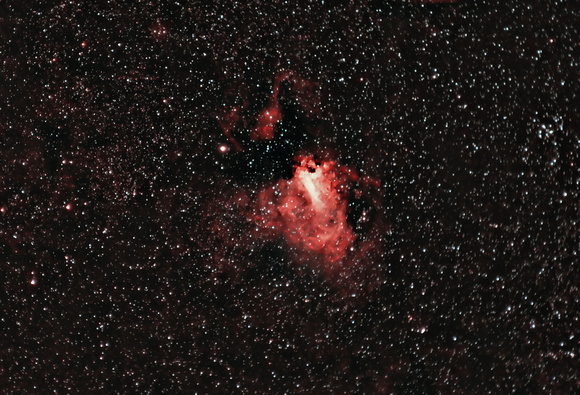Other Names: The Swan Nebula, Omega Nebula, NGC 6618
Optics: Borg Astrograph 101ED at f/4.1
Mount: Atlas EQG using The Sky6 and EQMOD
Camera: Canon EOS 50D [ UV/IR filter modification by Hap Griffin ]
Filters: IDAS Light Pollution Suppression (LPS-V4) Filter
Exposure: 45 Mins [9 x 300s at ISO 800]
Accessories: Auto guided with Borg 45ED and Orion Starshoot Auto guider using PHD
Location: Palm Cove, QLD, Australia
Date: August 19th, 2011
Notes: Processing: Image acquisition with Maxim DSLR. Image calibration, align, and combine in Maxim DSLR. Levels, curves, Noise Ninja, crop and resize in Photoshop.
Calibrated w/40 Darks, 40 Bias, 42 Flats using light box
Ambient temperature was +18.0C
M17 is an
H II region in the
constellation Sagittarius. It was discovered by
Philippe Loys de Chéseaux in 1745.
Charles Messier catalogued it in 1764. It is located in the rich starfields of the Sagittarius area of the
Milky Way.
The Omega Nebula is between 5,000 and 6,000
light-years from
Earth and it spans some 15 light-years in
diameter. The cloud of
interstellar matter of which this
nebula is a part is roughly 40 light-years in diameter. The total
mass of the Omega Nebula is an estimated 800
solar masses.
[3]An
open cluster of 35 stars lies embedded in the nebulosity and causes the
gases of the nebula to shine due to
radiation from these hot,
young stars.
The Swan portion of M17, the Omega Nebula in the
Sagittarius nebulosity is said to resemble a
barber’s pole.
[4]


